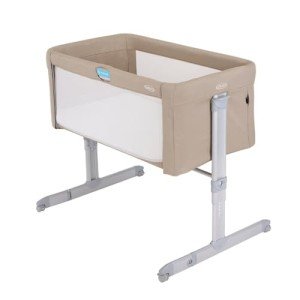The Benefits and Considerations of Bedside Cots for Co-Sleeping
Co-sleeping has actually emerged as a popular choice for numerous new parents who look for to preserve close distance to their infants throughout the night. Along with standard co-sleeping practices, bedside cots are gaining traction as an option that provides both the comfort of closeness and the security of different sleeping spaces. This article aims to check out the principle of bedside cots for co-sleeping, highlighting their advantages, prospective downsides, tips for choice, and typical concerns.
Understanding Bedside Cots
Bedside cots, also called side-sleepers or co-sleepers, are specially created cribs that are attached to the side of the parents' bed. They allow parents to preserve easy access to their infants during the night while offering a different sleeping area that can improve security and comfort.
Functions of Bedside Cots
- Size and Design: Bedside cots are frequently smaller sized than basic cribs but still provide ample room for an infant. Many models have adjustable heights to match the bed.
- Side Panels: Many designs include detachable or mesh side panels that permit safe visual tracking of the baby, boosting parents' capability to react to their baby's needs quickly.
- Stability and Safety: Bedside cots are built with stability in mind, including safety anchors or straps that protect the cot to the moms and dad's bed.
- Ease of Access: Parents can easily reach over to comfort or feed their baby without having to get out of bed, assisting in nighttime breastfeeding or calming.
Advantages of Using Bedside Cots for Co-Sleeping
- Improved Bonding: Proximity to the baby fosters emotional connection and bonding, which is vital during the early stages of development.
- Easier Nighttime Care: Nighttime feeding and soothing ended up being substantially simpler with a bedside cot, as parents can just lean over to address their baby's requirements.
- Increased Safety: Bedside cots lower the risk of suffocation or accidental rolls that can accompany traditional co-sleeping directly in the adult bed.
- Specific Sleep Space: The paperwork supports that having their own sleeping space can assist infants sleep better in terms of fewer disruptions from parents.
- Transitioning: A bedside cot can be a handy transitional tool as babies grow and start to move to their own spaces.
| Function | Benefits |
|---|---|
| Boosted Bonding | Closer physical existence |
| Easier Access | Quick response to requirements |
| Increased Safety | Decreased danger of accidents |
| Specific Space | Less disruption during the night |
| Streamlined Transition | Easier relocate to independent sleeping |
Factors to consider Before Choosing a Bedside Cot
While bedside cots use various benefits, potential users must consider the following elements:
- Size of Bed: Ensure that the cot fits surrounding to the bed without triggering pain or overcrowding.
- Budget: Prices can differ significantly among different brands and designs, so think about budget plan constraints thoroughly.
- Safety Standards: Check that the cot fulfills all security regulations to ensure it is devoid of dangerous materials and includes necessary safety features.
- Material: Non-toxic finishes and materials are most importantly crucial for infant health.
- Infant's Age and Weight: Some cots have weight limitations, and parents must choose accordingly based on their baby's growth.
Tips for Selecting a Bedside Cot
- Check out Reviews: Look for user feedback and security scores.
- Look for Certifications: Ensure the cot adheres to safety standards.
- Check the Design: Choose a design that complements your bedroom design while making sure performance.
- Consider Accessibility: Look for models that allow easy reach however minimize the danger of presenting.
- Test Stability: Ensure that the cot is steady and safe and secure when attached to the bed.
Common FAQs About Bedside Cots for Co-Sleeping
Q1: Are bedside cots safe for co-sleeping?
A1: When utilized properly, bedside cots are designed to offer a safe sleeping alternative for infants while making it possible for close distance to parents. Always guarantee to secure the cot properly to avoid movements that could lead to accidents.
Q2: At what age can I begin utilizing a bedside cot?A2: Many parents start utilizing bedside cots right after the baby is born. Nevertheless, it is vital to seek advice from a health care service provider concerning your infant's preparedness for co-sleeping, specifically if they were born prematurely. Q3: Can I use a regular
crib for co-sleeping? A3: While regular cribs can be used, they do not supply the same level of ease of access and safety as bedside cots, making bedside options more favorable for co-sleeping. Q4: What if my baby rolls over?A4: Most bedside cots are designed with security functions that decrease dangers if a baby rolls. Additionally,
they are usually low enough that a roll would not lead to a substantial drop. Q5: How do I transition my baby from a bedside cot to a regular crib?A5: Gradually move your baby to a different crib in their own room after they end up being familiar with oversleeping the bedside cot. Start with naps in the crib while preserving nighttime co-sleeping until they adapt. Bedside cots provide a practical and safer option to direct co-sleeping, offering numerous benefits in terms of benefit and security. They facilitate bonding
between infants and parents while lessening the threats related to traditional co-sleeping practices. Parents searching for a method to keep their babies close at night need to consider the advantages that bedside cots can provide. With Bedside Cot For Close Bonding of options readily available, parents can create a safe and comfortable sleep environment that supports their family's unique needs.

